Effective Cardio Routines: Boost Your Fitness Fun!

Cardio workouts are essential for a healthy heart, boosting endurance, and burning calories. But let’s face it, they can sometimes feel like a chore. The good news is that cardio doesn’t have to be boring. With a little creativity and enthusiasm, you can turn your cardio routine into an enjoyable part of your day.
Let’s dive into some effective cardio routines that are not only good for you but also fun to do!
Dance Your Heart Out
Dancing is an incredible way to get your heart pumping without feeling like you’re working out. Whether you prefer salsa, hip-hop, or even a bit of freestyle, dancing engages your entire body.

Put on your favorite tunes, clear some space in your living room, and dance like no one’s watching. You can even follow along with dance workout videos online if you need some inspiration. The best part? You’re having so much fun you’ll forget you’re exercising!
You don’t need to be a professional dancer to enjoy this cardio workout. Just move to the beat and let your body express itself.
Dancing not only helps you burn calories but also improves your coordination and mood. Plus, it’s a fantastic way to relieve stress and let go of the day’s worries.
Interval Training: Short and Sweet
If you’re short on time but still want a powerful cardio workout, interval training is your best friend. Interval training involves alternating between high-intensity bursts of activity and lower-intensity periods of recovery. This method is efficient, effective, and can be done with various exercises like running, cycling, or jumping rope.

For example, you can sprint for 30 seconds, then walk for a minute, and repeat. This keeps your heart rate up and ensures you’re burning maximum calories in a shorter amount of time.
Plus, the changing intensity levels keep things interesting and prevent your workout from becoming monotonous. You can customize the intervals to match your fitness level and goals, making it a versatile option for everyone.
Jumping Rope: Old School Fun
Remember the joy of jumping rope as a kid? It turns out this playground favorite is also an excellent cardio workout for adults. Jumping rope is great for burning calories, improving coordination, and strengthening your legs and core. It’s also incredibly portable, making it easy to fit in a quick workout anywhere.

Start with basic jumps and gradually increase your speed and the duration of your sessions. As you become more comfortable, you can try different jump rope techniques like criss-cross, high knees, or double unders.
These variations not only make the workout more fun but also challenge different muscle groups, enhancing your overall fitness.
Outdoor Adventures: Explore and Exercise
Why not combine your cardio workout with some fresh air and beautiful scenery? Outdoor activities like hiking, biking, or even brisk walking can provide a fantastic cardiovascular workout while allowing you to enjoy nature.

Explore local parks, trails, or your neighborhood and make your workout an adventure.
Hiking, for example, is a great way to build endurance and strengthen your lower body. The varied terrain challenges your muscles and improves balance.
Biking, on the other hand, is excellent for your heart and can be done solo or with friends. Even a simple brisk walk can elevate your heart rate and give you a mental boost. The key is to keep moving and enjoy the journey.
Swimming: Dive Into Fitness
Swimming is a full-body workout that’s gentle on your joints but tough on calories. It’s an ideal option for people of all fitness levels, especially those with joint issues or injuries.

Swimming laps, water aerobics, or even just playing around in the pool can get your heart rate up and improve your overall fitness.
The resistance of the water makes your muscles work harder, while the buoyancy reduces impact on your joints.
Plus, swimming is a refreshing way to cool down on a hot day. Try incorporating different strokes like freestyle, breaststroke, or backstroke to keep your workout varied and engaging.
Group Classes: Sweat Together
Working out with others can be incredibly motivating and fun. Group cardio classes like Zumba, spin, or kickboxing offer a structured workout with a social component. The energy of the group and the guidance of an instructor can push you to work harder and keep you accountable.
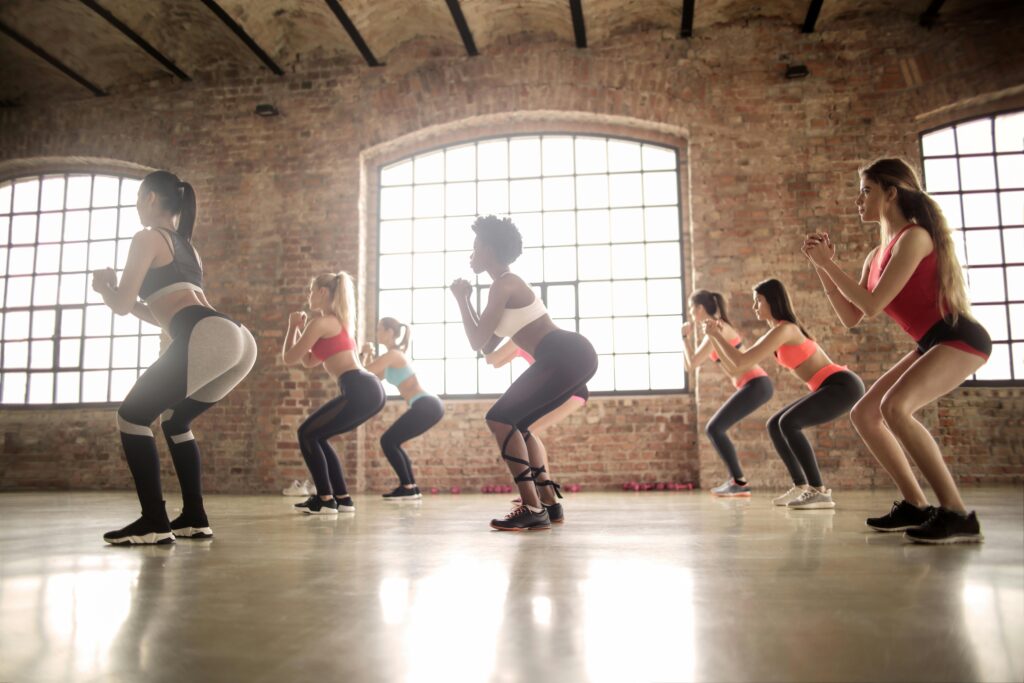
Zumba combines dance and aerobics for a high-energy workout that feels more like a party than exercise.
Spin classes provide an intense cycling workout with the added fun of great music and enthusiastic instructors.
Kickboxing is perfect for releasing stress and building strength while getting a killer cardio workout. Check out local gyms or online platforms for classes that fit your schedule and interests.
Quick Strength Training Tips for Busy Professionals
Start with Bodyweight Exercises
When you’re pressed for time, bodyweight exercises are your best friend. You don’t need any equipment, and you can do them anywhere. Push-ups, squats, lunges, and planks are fantastic for building strength.
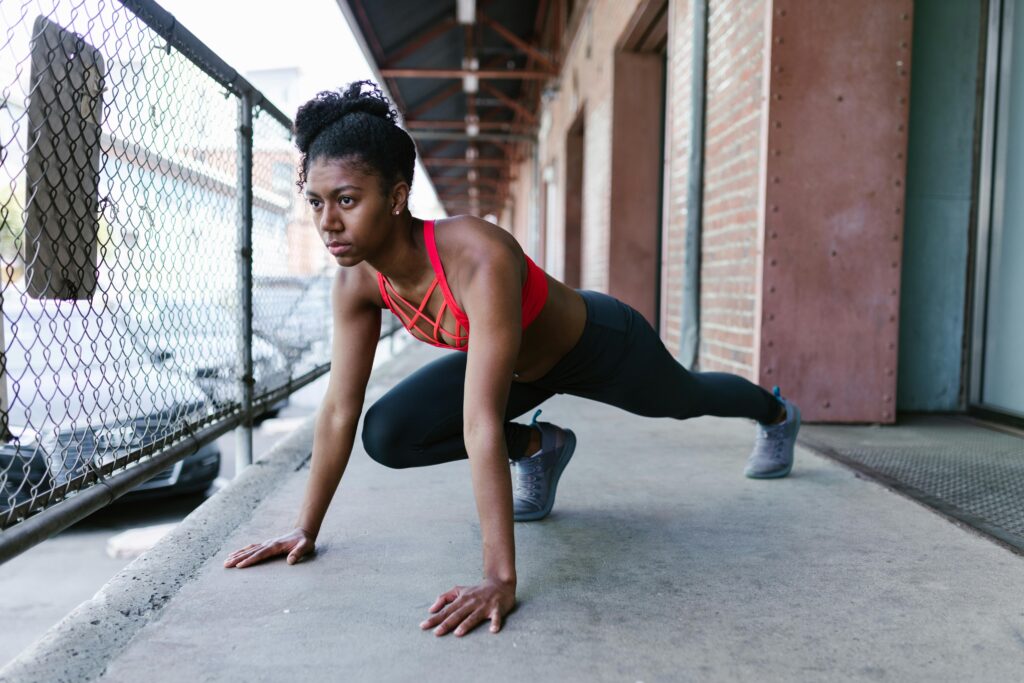
Plus, they target multiple muscle groups, giving you more bang for your buck. Start with a few sets of each exercise, and gradually increase the number as you get stronger. Remember, form is key. Keep your movements controlled and focused to avoid injuries.
Incorporate Compound Movements
Compound movements are exercises that work multiple muscle groups at once. They are perfect for a quick, effective workout. Think of exercises like deadlifts, bench presses, and rows. These movements help you build strength more efficiently than isolation exercises.

For example, a squat not only targets your legs but also engages your core and lower back. Adding these to your routine can help you see results faster, especially when you’re short on time.
Use Supersets to Save Time
Supersets are a great way to maximize your workout in a limited time frame. This involves doing two exercises back-to-back with no rest in between.
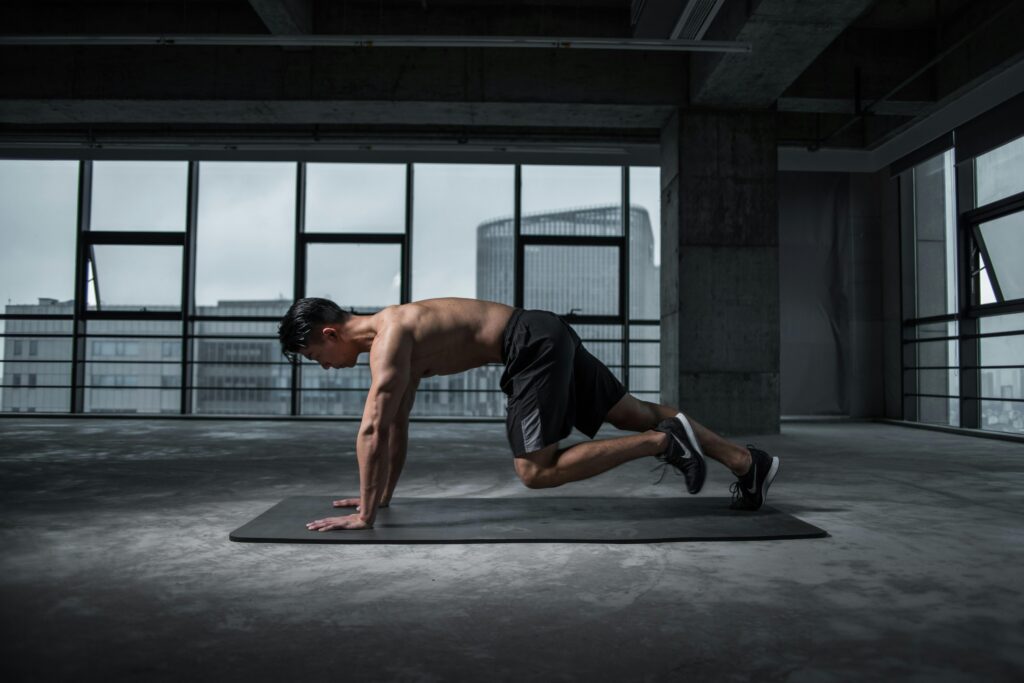
For instance, you could pair push-ups with squats. This keeps your heart rate up and allows you to work different muscle groups without taking breaks. It’s a time-saving technique that also boosts your endurance.
You can switch up the combinations to keep things interesting and challenging.
Focus on Form Over Reps
Quality over quantity is essential in strength training. It’s better to do fewer reps with proper form than more reps with sloppy technique.
Good form not only helps prevent injuries but also ensures you’re effectively targeting the intended muscles.
Take your time to learn the correct way to perform each exercise. There are plenty of online resources and videos that can guide you. Remember, it’s not about how many reps you can do, but how well you do them.
Incorporate Rest and Recovery
Rest and recovery are just as important as the workout itself. Your muscles need time to repair and grow stronger.
Make sure to give each muscle group at least a day to recover before working it again.
You can do this by alternating the muscle groups you target each day.
For example, do upper body exercises one day and lower body the next. Stretching and foam rolling can also help reduce soreness and improve flexibility, keeping you in top form for your next session.
Mix It Up with Different Equipment
If you have access to equipment, don’t hesitate to mix it up. Dumbbells, kettlebells, and resistance bands can add variety to your routine.
These tools can help you target muscles in different ways and keep your workouts interesting.
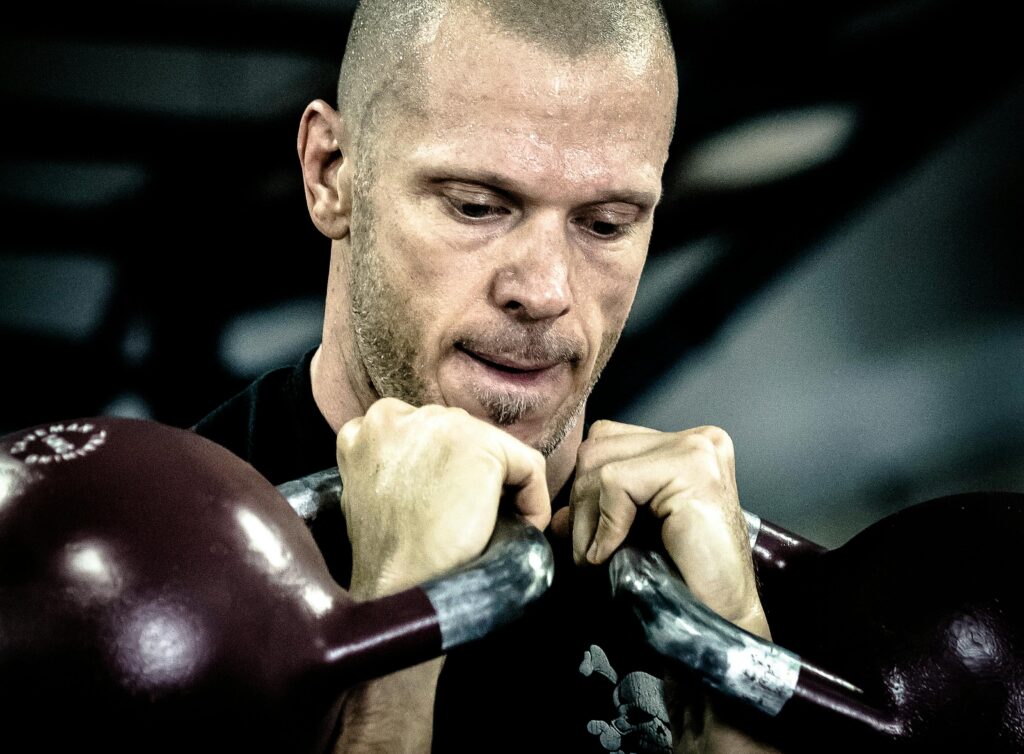
For example, using a kettlebell for swings can add a cardio element to your strength training. Resistance bands are great for adding tension without needing heavy weights. Experiment with different tools to see what you enjoy and what challenges your muscles the most.
Track Your Progress
Keeping track of your progress is a great way to stay motivated. Note down the exercises you do, the number of reps, and the weights used. Over time, you’ll see how much you’ve improved.

This can be incredibly motivating and help you stay committed to your fitness journey. You can use a simple notebook, a spreadsheet, or even a fitness app. Celebrating small milestones can make a big difference in maintaining your enthusiasm.
Combine Strength Training with Cardio
Integrating cardio with your strength training can enhance your overall fitness. High-intensity interval training (HIIT) is a fantastic way to do this.
You can alternate between strength exercises and short bursts of cardio, like jumping jacks or burpees. This not only builds muscle but also keeps your heart rate up, improving your cardiovascular health. It’s an efficient way to get a full-body workout in a short amount of time.
Stay Consistent
Consistency is the key to seeing results. It’s better to do shorter, regular workouts than long, infrequent ones. Aim for at least three strength training sessions a week.
Even if you can only squeeze in 10-15 minutes, it’s better than nothing. Over time, these small sessions add up to significant progress. Make it a habit, and soon it will be a regular part of your routine.
Incorporating Stretching and Flexibility into Your Routine
Why Stretching Matters
Stretching is often overlooked, but it’s a crucial part of any fitness routine. Whether you’re a beginner or a seasoned athlete, stretching helps maintain your body’s flexibility, strength, and overall health.

Plus, it feels amazing! You know that satisfying stretch you do when you wake up? Imagine feeling that way throughout the day. Incorporating regular stretching can improve your range of motion, reduce the risk of injury, and make your workouts more effective.
Easy Stretches to Start Your Day
Let’s kick off with some simple stretches you can do in the morning. These are designed to wake up your body and get you moving without taking up too much time.

Start with a gentle neck stretch. Tilt your head to one side, bringing your ear towards your shoulder. Hold for 15 seconds, then switch sides. Next, move on to shoulder rolls. Roll your shoulders forward in a circular motion for ten seconds, then reverse the direction. This helps release any tension built up overnight.

Now, let’s stretch those legs. Stand with your feet hip-width apart and slowly bend forward at the hips. Try to touch your toes, but don’t worry if you can’t reach them just yet. Hold this position for 15-20 seconds to stretch your hamstrings and lower back.
Finally, do a gentle quad stretch by standing on one leg, grabbing your opposite ankle, and pulling it towards your glutes. Hold each side for 15 seconds. These simple stretches are a great way to start your day feeling refreshed and limber.
Incorporating Stretching into Your Workouts
Incorporating stretching into your workouts can significantly enhance your performance and recovery.
Start with a dynamic warm-up to prepare your muscles for exercise. Dynamic stretching involves moving parts of your body and gradually increasing reach and speed.

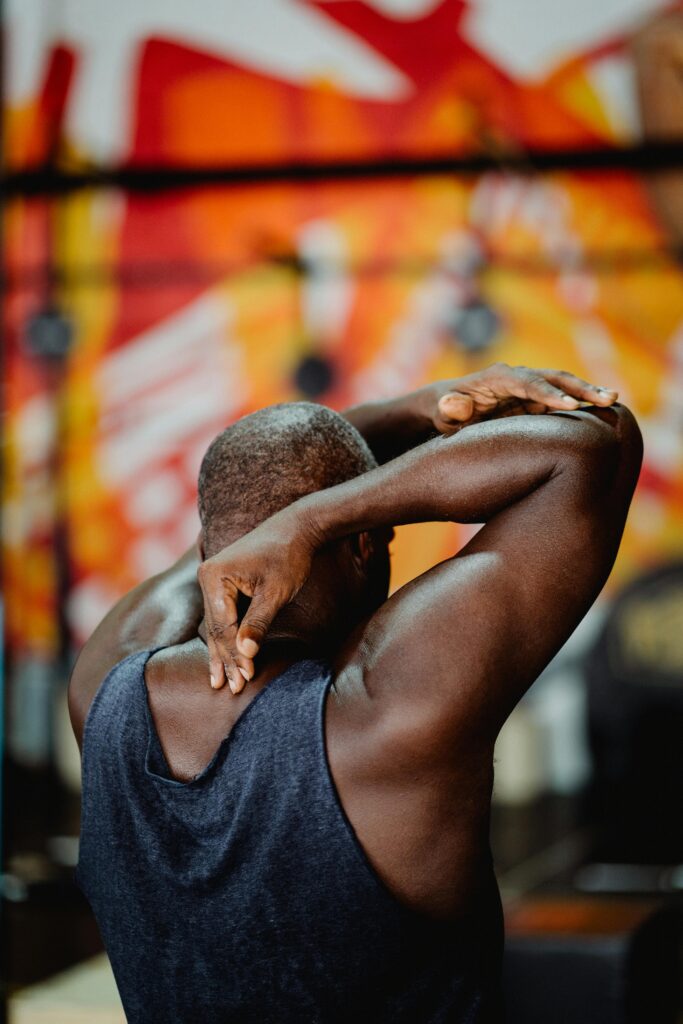
Think of leg swings, arm circles, and walking lunges. These stretches increase blood flow to your muscles, making them more pliable and less prone to injury.
After your workout, switch to static stretching. This involves holding a stretch for 15-30 seconds. Focus on the major muscle groups you worked during your exercise session.
For instance, if you did a lot of leg work, stretch your hamstrings, quads, and calves. If you focused on your upper body, stretch your shoulders, chest, and triceps. This post-workout stretching helps reduce muscle soreness and improve flexibility over time.
Making Stretching Fun and Social
Stretching doesn’t have to be a solitary activity. Make it fun by involving friends or family. Try a partner stretching session where you can help each other deepen the stretches.

For example, you can sit back-to-back and gently press against each other for a deeper spine stretch. Or, try a yoga class together. Yoga is an excellent way to improve flexibility while enjoying a social and relaxing environment.
You can also set stretching goals and challenges. Challenge yourself to hold a stretch for a few seconds longer each day or try a new stretch every week. Share your progress on social media and encourage friends to join in. This makes stretching a fun, community activity and keeps you motivated.
The Struggle of Finding Time
We’ve all been there—squeezing a workout into an already packed schedule can feel impossible. Between work, family, and social commitments, finding time for fitness might seem like a luxury.

But don’t worry! You can stay consistent with your workouts, even on the busiest days, with a few simple strategies. Let’s dive into how you can make it happen.
Prioritize and Plan Ahead
First things first, planning is your best friend. Take a few minutes at the start of each week to look at your schedule. Identify the busiest days and carve out short time slots for your workouts.

Even if it’s just 10 or 15 minutes, putting it on your calendar makes it a commitment. Treat these workout sessions like important meetings you can’t miss. By prioritizing your health, you’re more likely to stick to your fitness goals.
Next, consider the times when you’re naturally more energized. Are you a morning person or do you get a burst of energy in the evening?
Schedule your workouts when you’re most likely to feel motivated. This way, you’re not forcing yourself to exercise when you’re drained from the day’s activities. Remember, consistency is key, and finding a routine that fits your natural rhythm makes it easier to stick with it.
Make the Most of Short Workouts
When time is tight, short and effective workouts are your go-to solution. High-Intensity Interval Training (HIIT) is perfect for this. These workouts involve short bursts of intense exercise followed by brief rest periods. They’re designed to get your heart pumping and burn calories quickly.

The best part? You can complete a full HIIT session in just 20 minutes or less.
Another great option is to incorporate mini-workouts throughout your day.
Sneak in a few minutes of exercise wherever you can. Do squats while brushing your teeth, calf raises while waiting for your coffee to brew, or take the stairs instead of the elevator.
These little bursts of activity add up and help you stay active, even when your schedule is packed.
Combine Workouts with Daily Activities
Why not multitask and combine your workouts with your daily activities? This can be a fun and creative way to stay consistent.
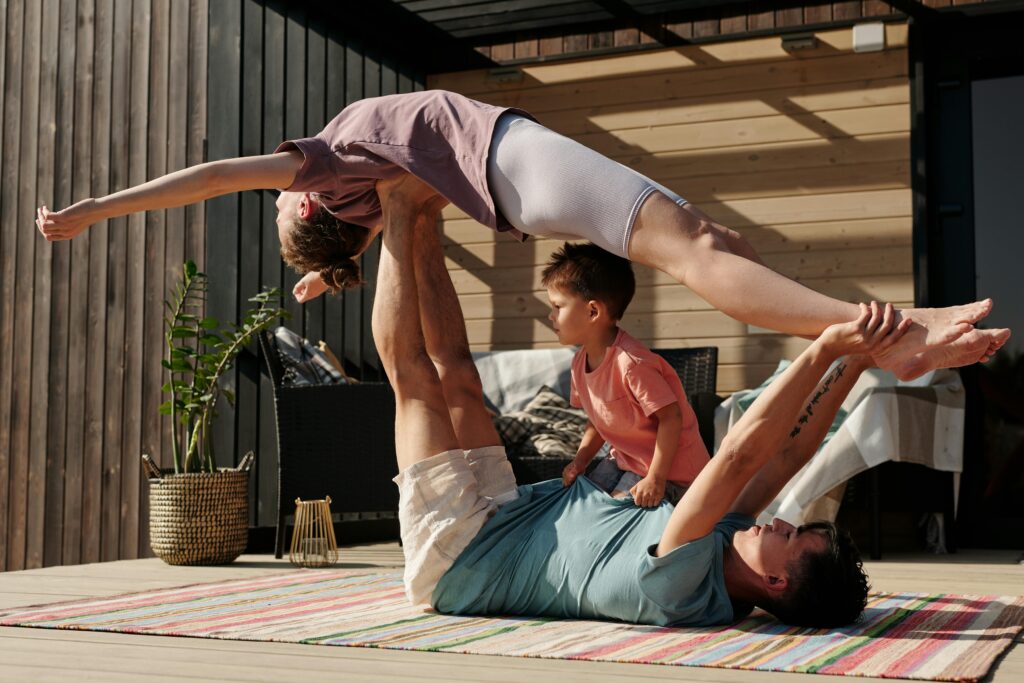
For example, if you have young kids, turn playtime into a workout session. Chase them around the park, play a game of tag, or lift them for some strength training. You’ll bond with your kids while staying active.
If you spend a lot of time commuting, consider biking or walking part of the way. Not only will you get your exercise in, but you’ll also enjoy some fresh air and possibly save on transportation costs.
If you work from home, take regular breaks to stretch and move around. Set a timer to remind yourself to get up and do a quick workout every hour. It’s a great way to break up the workday and keep your energy levels high.
Stay Accountable and Have Fun
Staying consistent with your workouts is much easier when you have accountability. Find a workout buddy or join a fitness group.
Having someone to share your fitness journey with makes it more enjoyable and motivates you to show up, even on the days when you’d rather skip it. Plus, it’s always more fun to exercise with friends.

Another way to stay accountable is by tracking your progress. Keep a fitness journal or use an app to log your workouts.
Celebrate your achievements, no matter how small. Did you complete a 10-minute workout every day this week? That’s fantastic! Give yourself a pat on the back and recognize your efforts.
Finally, make sure you’re enjoying your workouts. If you’re not having fun, you’re less likely to stick with it. Experiment with different types of exercise until you find something you love.
Whether it’s dancing, yoga, swimming, or hiking, there’s an activity out there that will make you excited to move. Remember, the best workout is the one you look forward to doing.
Embrace Flexibility and Be Kind to Yourself
Life happens, and sometimes your perfectly planned schedule goes out the window. That’s okay! The key is to be flexible and adaptable. If you miss a workout, don’t beat yourself up. Just get back on track as soon as you can.
Consistency doesn’t mean perfection—it means making an effort over time.
Listen to your body and give yourself grace. If you’re feeling exhausted, it’s okay to take a rest day. Pushing yourself too hard can lead to burnout and injuries, which will only set you back. Balance your workout routine with proper rest and recovery to stay healthy and motivated in the long run.
Conclusion
Staying consistent with your workouts on a tight schedule might be challenging, but it’s definitely achievable.
By prioritizing your fitness, making the most of short workouts, combining exercise with daily activities, staying accountable, and embracing flexibility, you can maintain a healthy lifestyle even when life gets busy.

Remember, every little bit counts, and the effort you put in today will pay off tomorrow. So, lace up those sneakers, find what works for you, and enjoy the journey to a fitter, healthier you!
